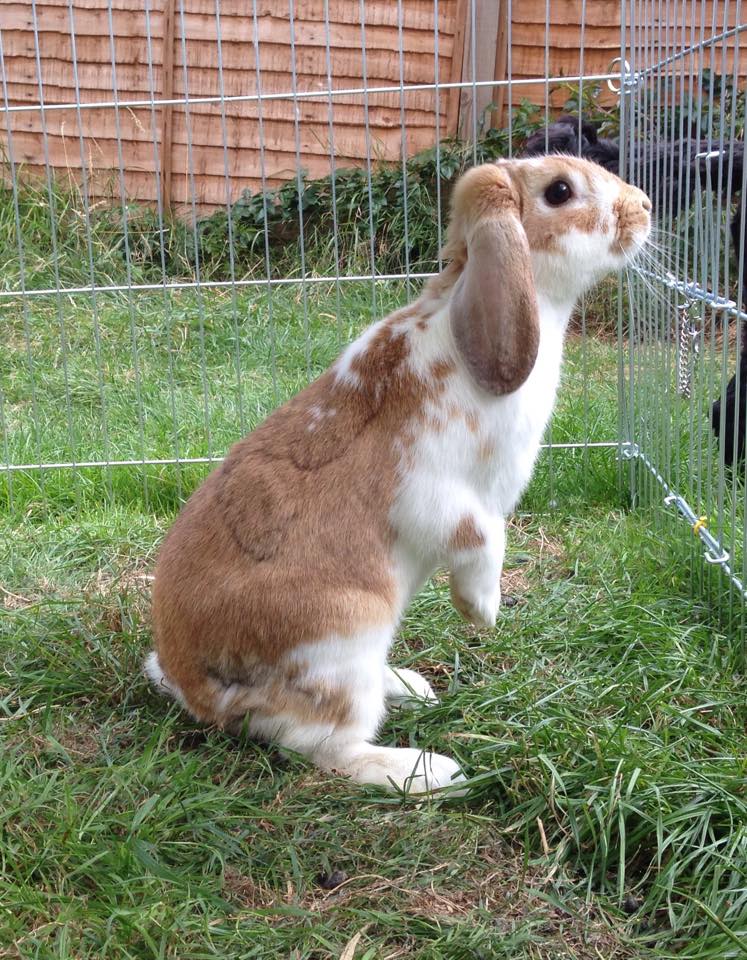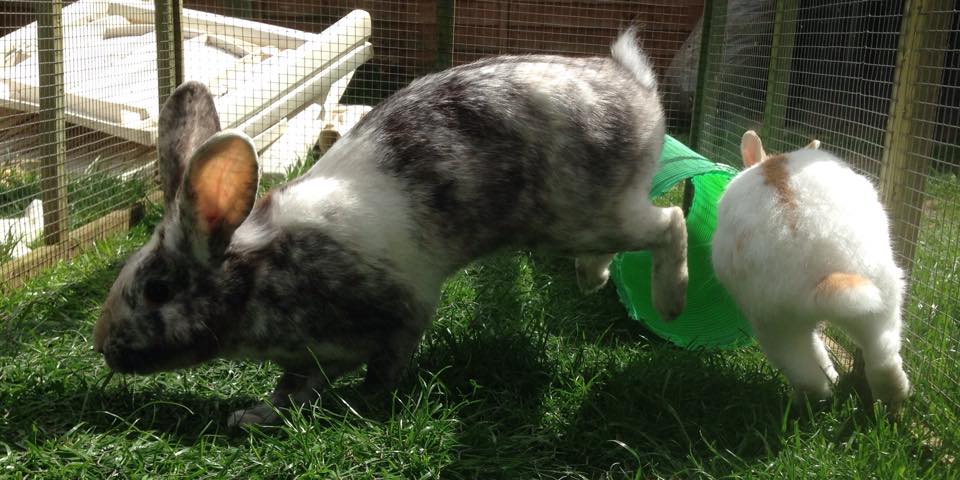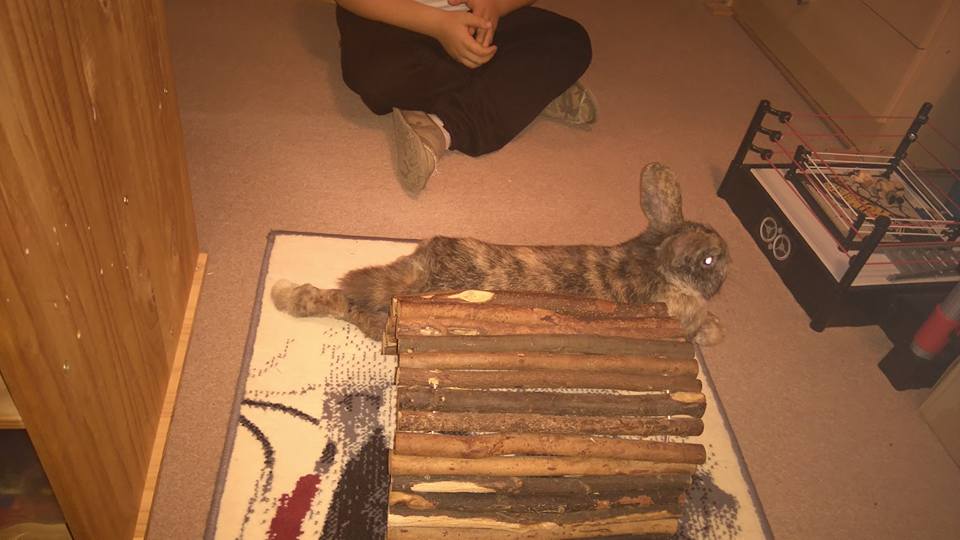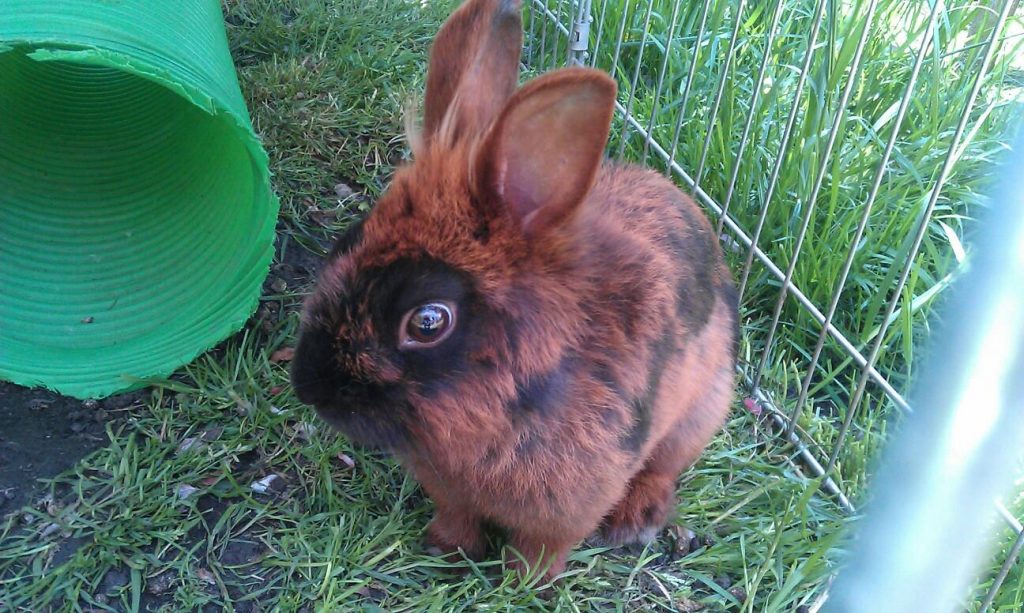Lots of people ask to adopt a rabbit they can cuddle, or one who is able to be carried around by their children, however, rabbits generally don’t like to be picked up. You can see it most the time with rabbits as many will dart off when you reach down to pick them up, but why is this? Why don’t rabbits like to be held? A large, shadowy figure approaching them can be really frightening for a rabbit, even if they know you really well as anything large coming towards them or from above can be seen as a threat. In order to understand why rabbits don’t like being handled, we need to think like a rabbit. Rabbits are a prey species, meaning they spend most of their time looking out for predators. If we think about the structure of a rabbit, we can see how perfectly designed they are to watch out for predators.
Hearing
Perhaps the rabbits most vital sense is hearing. Rabbits have excellent hearing, which is why wild rabbits have upright ears. Most rabbits (except ones like Netherland Dwarfs) have large ears that are used to listen out for danger. Rabbits are able to hear much higher pitches that us, and are able to move their ears around to pinpoint noises – they can even move them independently from each other. If you see them moving their ears back and forth, it means they are hard at work, trying to listen. Even when the rabbit is relaxed and their ears are flat along their back, they are still able to hear well and will respond to noise. Not only does the rabbit use it’s ear to listen for danger, but it also uses them to help navigate as the sound waves bounce off objects and let the rabbit work out it’s surroundings.

Vision
Rabbits have large eyes that are located on the side of their head. This gives them a large field of vision, as they can see in every direction without moving their head, which means they can look out for predators and work out an escape route at the same time. Rabbits can react to aeroplanes as they are farsighted, meaning they could confuse a plane with a predator in the sky. Although they have a wide range of vision, they have poor depth perception and are unable to see things that are up close clearly. This is why sudden movements can cause them to run. As rabbits can see things better when they are far away, it means they are able to detect possible dangers in the distance and give them enough time to get to safety.
Smell
Rabbits noses twitch to draw air into the lungs to breathe, and it also helps them to detect danger. Rabbits are constantly sniffing the air and have over fifty million receptor cells in their nose, compared to humans who have six million. This means that rabbits are able to smell predators before they see them. Within the nose are movable folds which help them detect scent either by olfactory sensory cells which will detect any airborne scents – Or via the Jacobson Organ which detects heavy moisture borne molecules and pheromones. As moist air carries more scent, rabbit’s have a split top lip which will moisten the air as it passes through, enhancing the scent and giving the rabbit more information.
Body shape
Rabbits are perfectly designed to get away from danger. Their large back feet allow them to balance when they stand on their back legs which give them a better view when looking for danger. The large feet also help them pick up speed if they sense a threat, and they have a powerful kick to defend themselves with.
All of these characteristics make rabbits excellent at avoiding predators, but also helps us to understand why they don’t like to be handled. They are born with this instinct to avoid danger and therefore, can perceive being picked up as a potential threat.

Trancing
So now we know why rabbits are so well designed to avoid danger, let’s look at how not to hold your rabbits. Putting your rabbit on their back is a really, really bad idea. It may look cute to hold them like a baby, and your rabbit may even appear to fall asleep, but it’s not good for rabbits. This old fashioned way of handling rabbits is called tonic immobility, trancing or hypnotising. This way of handling takes advantage of the rabbit being a prey species, and the rabbit will stay immobile as if it’s playing dead due to being held in a vulnerable position. Studies have shown that the rabbits are not in a calm state when being held on their backs and the rabbits are showing fear response to this handling methods. Studies on the hormone levels, heart rate and behavioural observations all back up this theory, so don’t trance your rabbit!
How to interact with your rabbit
Rabbits are happiest with all four feet on the floor, but this doesn’t mean you can’t interact with them. I always recommend the best way to make friends with your bunnies is to get down to their level and sit with them – this is a great way for children and adults alike to build a relationship with their rabbits, where the bunnies can feel comfortable and not confined. It will allow your rabbit to climb on you, without the added pressure of them being elevated from the ground. A relaxed rabbit is a happy rabbit.

Of course, there will be times when you will need to handle your rabbit, and in order for you to give them daily health checks, you will have to pick them up. Always use one hand to support their back end, and put your other hand under their chest. Turn them into your body so they are close to you and feel secure. This will allow you to check them over. If you are unsure on how to health check your rabbit, have a look at my blog telling you how.
Follow me on Facebook and Twitter to stay connected and to learn more!
More Rabbit Articles:


i think reading your piece of work is a one the best previledge i have acquired this year. It quiet awesome and well-noteable.